Human Body Chapter Notes | Science Olympiad for Class 2 PDF Download
| Table of contents |

|
| Human Body |

|
| External Organs of Human Body |

|
| Internal Organs of Human Body |

|
| Sense Organs |

|
| Bones and Muscles |

|
| Human Skeleton |

|
| Muscle |

|
| Exercise and Posture |

|
Human Body
(a) Our body is made up of many parts, and each part has a special job to do. These parts are called organs.
(b) Every organ in our body has its own special job to do. When a group of organs work together to do a specific task, we call it an organ system.
External Organs of Human Body
(a) Some organs are on the outside of our body and we can see them, like our head, lips, fingers, hands, legs, eyes, ears, nose, skin, and tongue. These are called external organs.
(b) They are the parts of our body that we can touch and see.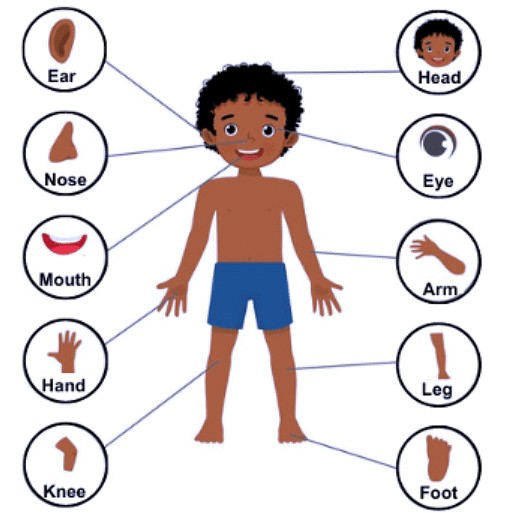
We use our hands to write, eat, and pick up things. Our legs help us to stand, kick, walk, climb, jump, and run. Our back helps us to stand up straight and to bend forward, backwards, and sideways. And our neck helps us move our heads.
Internal Organs of Human Body
(a) There are organs inside our body that we can't see from the outside.
(b) These are our internal organs, like the brain, lungs, heart, and stomach.
(c) Even though we can't see them, they are doing important jobs to keep our bodies healthy and working properly.
(d) Brain, heart, lungs, and stomach are some examples of internal organs of human body.
1. Brain
- It helps us think, learn, remember things, and feel emotions.
- It also controls our movements and lets us see, hear, smell, and taste things.
2. Heart
- The heart is like a pump in the middle of our chest.
- It keeps our blood flowing and delivers oxygen and nutrients to our body.
- It's like the engine that keeps us going!
3. Lungs
- Lungs help us breathe in the fresh air and get oxygen into our bodies.
- When we breathe out, the lungs get rid of waste carbon dioxide.
4. Stomach
- The stomach takes the food we eat and breaks it down into smaller pieces.
- Special juices in the stomach help with digestion, turning the food into nutrients our body can use.
5. Liver
- The liver filters our blood and removes harmful substances.
- It also makes important chemicals that help us digest our food.
6. Intestines
- We have two types of intestines - the small intestine and the large intestine.
- The small intestine is like a long tube that absorbs in all the good nutrients from our food.
- The large intestine helps get rid of the waste that our body doesn't need.
7. Kidneys
- We have two kidneys, one on each side of our body.
- They act as filters, cleaning our blood by removing waste and extra water.
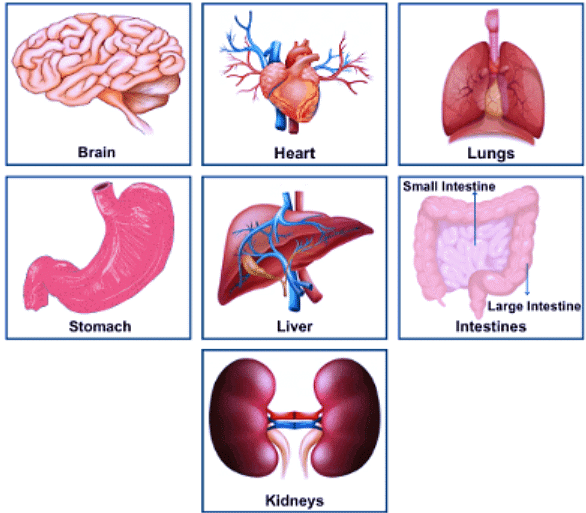
Sense Organs
Our sense organs play a vital role in helping us understand the world around us. We have five sense organs, which are the eyes, ears, nose, tongue, and skin. These organs allow us to gather information about our surroundings and experience different sensations.
- Our nose helps us sense pleasant or unpleasant smells.
- Our ears allow us to hear different sounds. Some sounds are nice to listen to, while others can be loud.
- Our skin helps us feel the texture of objects when we touch them. We can feel if something is hard, soft, hot, cold, smooth, or rough.
- Our tongue helps us taste different flavours of food. We can taste if something is sweet, sour, salty, or bitter.
- Our eyes help us see and understand the world around us.
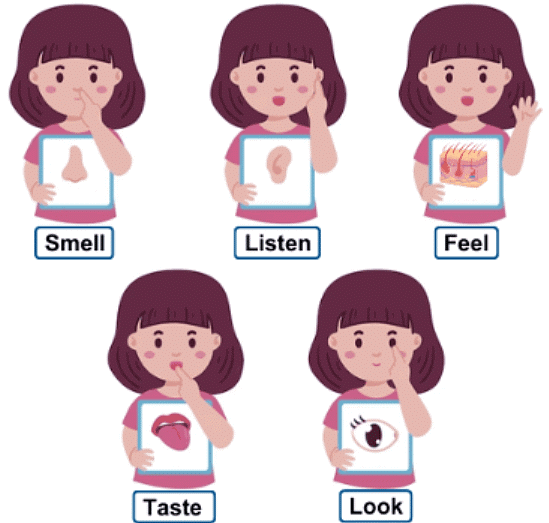
Bones and Muscles
Our body is composed of two main components: muscles and bones. Muscles are soft tissues, while bones are hard structures. Together, they provide structure, shape, and support to our bodies.
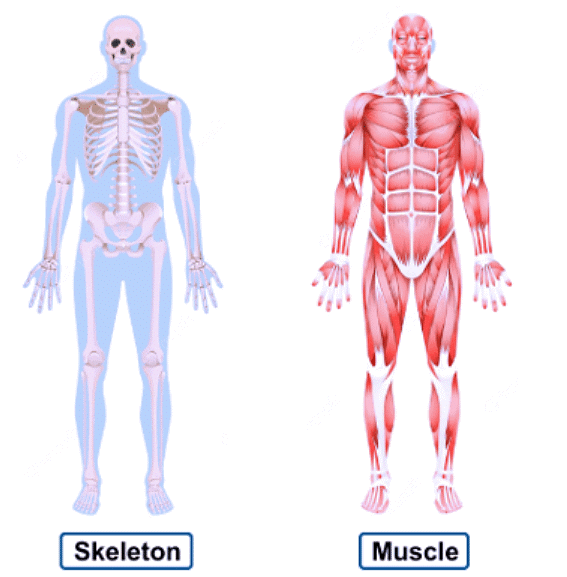
Human Skeleton
- Our body has a framework made of bones called the skeleton.
- When we are born, our body has around 300 bones, but as we grow, some of these bones join together. As adults, we have about 206 bones.
- The point where two bones meet is called a joint.
- The skeleton gives our body its shape and provides support. It also protects important organs like the brain, which is protected by the skull, and the lungs and heart, which are protected by the ribcage.
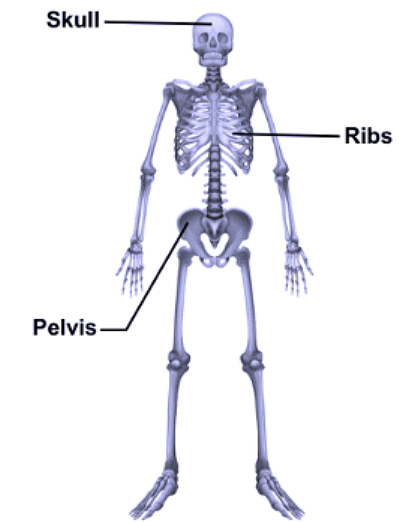
Muscle
- Muscles are soft tissues that surround and cover our bones. They play a vital role in helping our bones move.
- We have approximately 600 muscles in our body, and they come in different sizes. Some muscles are large, while others are small.
- One remarkable muscle in our body is the heart muscle, which works even when we are asleep. It keeps pumping blood throughout our body without taking a break.
- Muscles and bones work together as a team, enabling us to perform various movements such as running, dancing, climbing, walking, and playing.
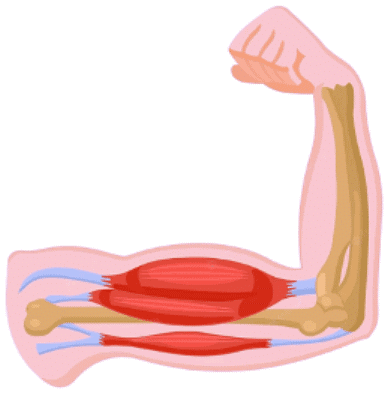
Exercise and Posture
- Taking care of our physical health is crucial, and exercise plays a significant role in achieving that.
- To stay fit and strong, it's important to consume nutritious food and engage in regular physical activities.
- Activities like swimming, jogging, cycling, and skipping are great exercises that promote overall well-being.
- Another important aspect of our body is posture, which refers to how we hold ourselves when sitting, standing, or moving.
- It's essential to maintain good posture by sitting and standing up straight and walking in an upright position. This helps keep our body aligned and promotes a healthy body position.
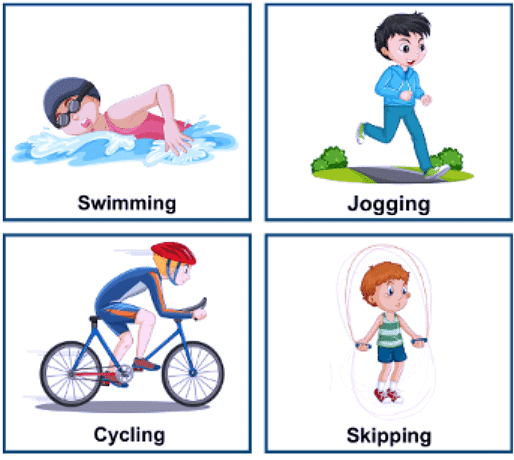
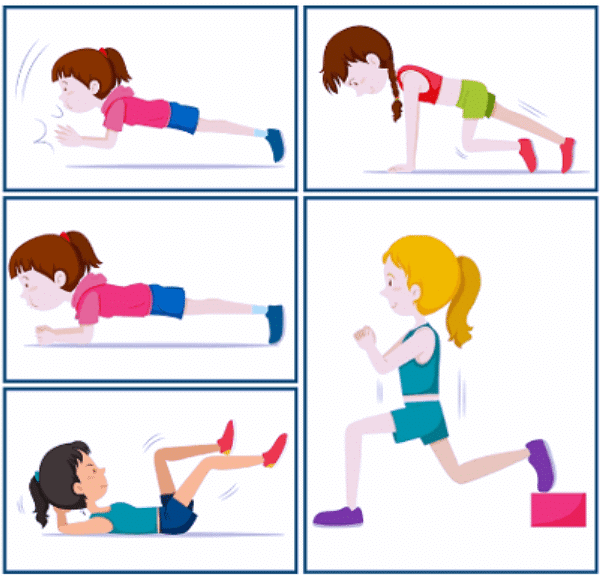
|
55 videos|64 docs|87 tests
|















